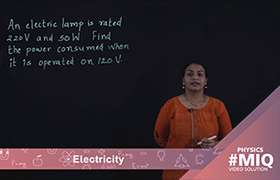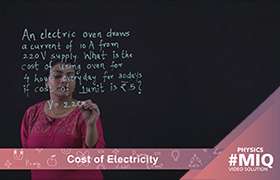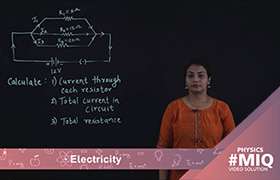CBSE Class 10 Answered
numerical
Asked by Vishad | 12 May, 2013, 07:57: PM
When the current goes in a parallel branch. It is always divided in the inverse ratio of the resistances. More resistance will have less current and vice versa, because the value of voltage is same for all the resistances.
So, I(through 10 ohm)/ I(through 15 ohm) = 15/10 = 3/2
And the total current is 1 Amperes that is the sum of all the 2 currents is 1 amp.
So, I10 + I15 = 1
and I10 / I15 = 3/2
Solving above two equations we get
I10 = 0.6A
and I15 = 0.4A
Answered by | 12 May, 2013, 08:55: PM
Application Videos
Concept Videos
CBSE 10 - Physics
Asked by khajannirwan | 27 Feb, 2024, 10:20: PM
CBSE 10 - Physics
Asked by saanviyadla | 24 Jan, 2024, 07:06: PM
CBSE 10 - Physics
Asked by kamalaranjanmohantymohanty5 | 06 Jan, 2024, 10:05: AM
CBSE 10 - Physics
Asked by nandhikasugumar | 05 Oct, 2023, 04:01: PM
CBSE 10 - Physics
Asked by daniya062008 | 02 Oct, 2023, 08:25: PM
CBSE 10 - Physics
Asked by prassanna.j | 03 Sep, 2023, 12:28: PM
CBSE 10 - Physics
Asked by prassanna.j | 03 Sep, 2023, 12:21: PM
CBSE 10 - Physics
Asked by prassanna.j | 03 Sep, 2023, 12:13: PM
CBSE 10 - Physics
Asked by prassanna.j | 03 Sep, 2023, 12:11: PM













